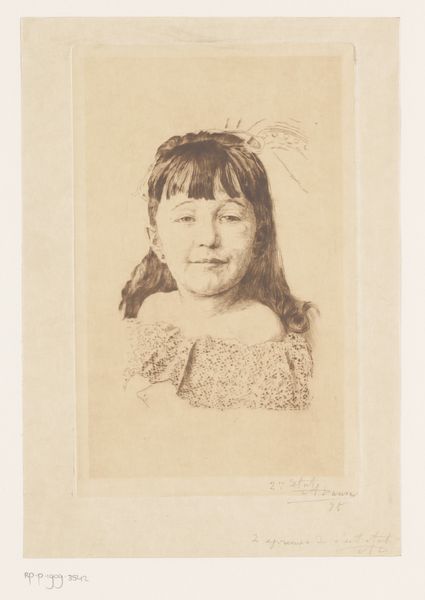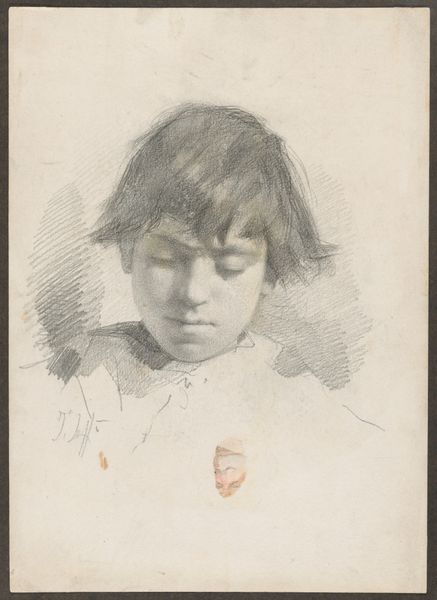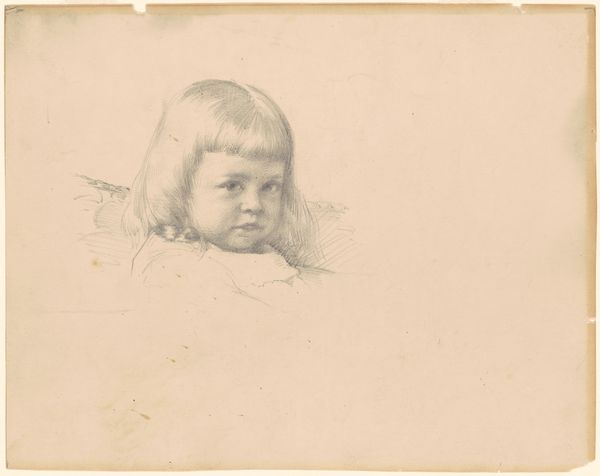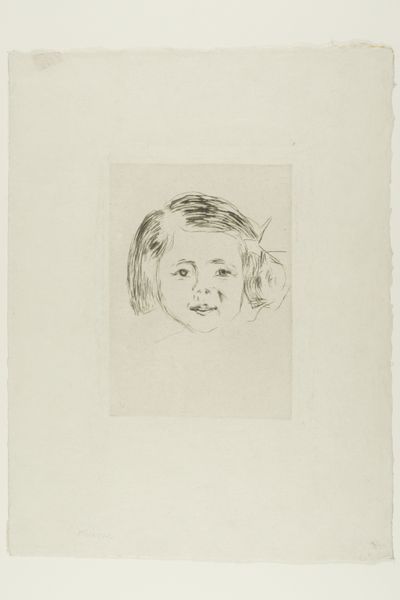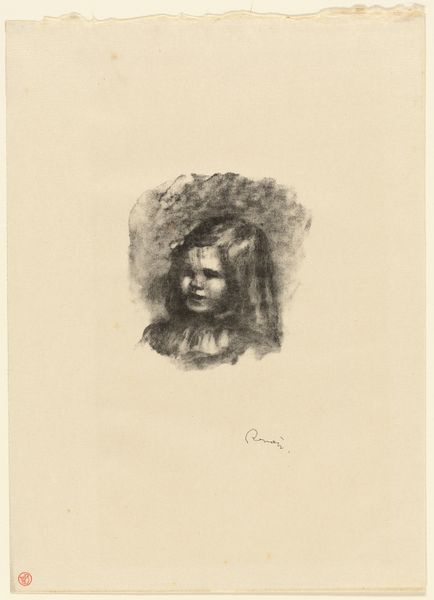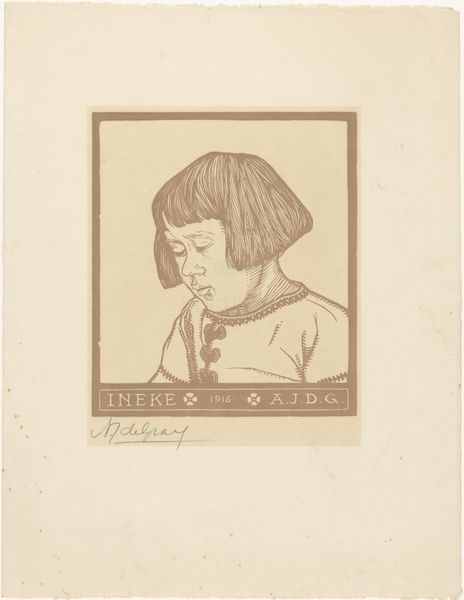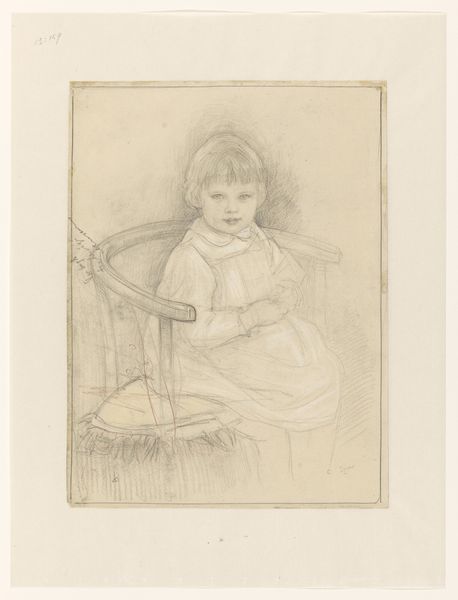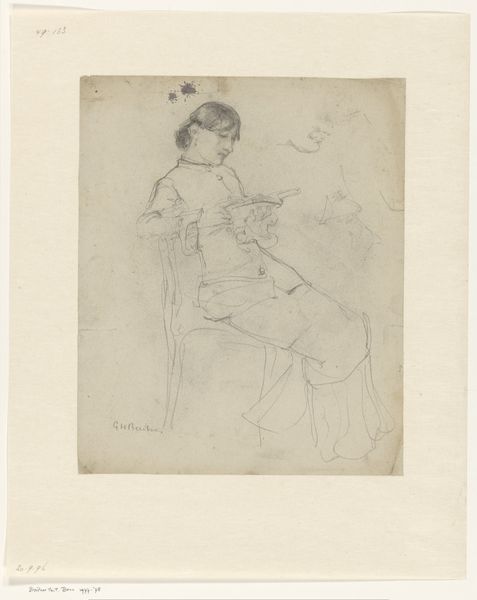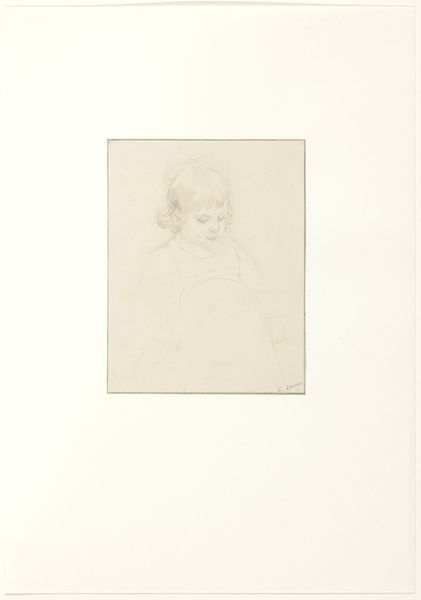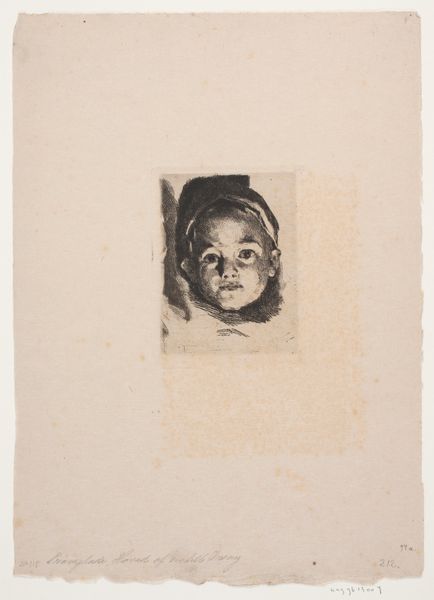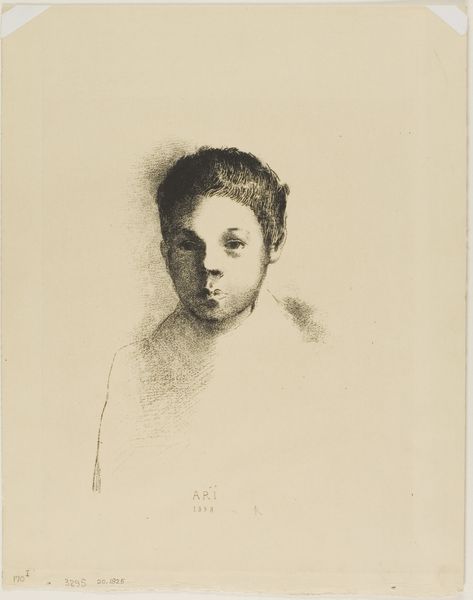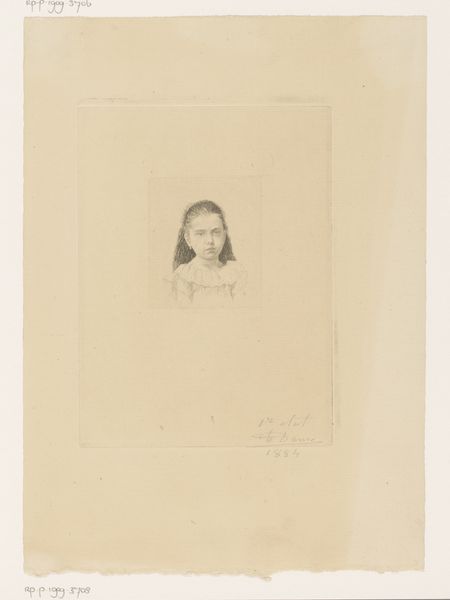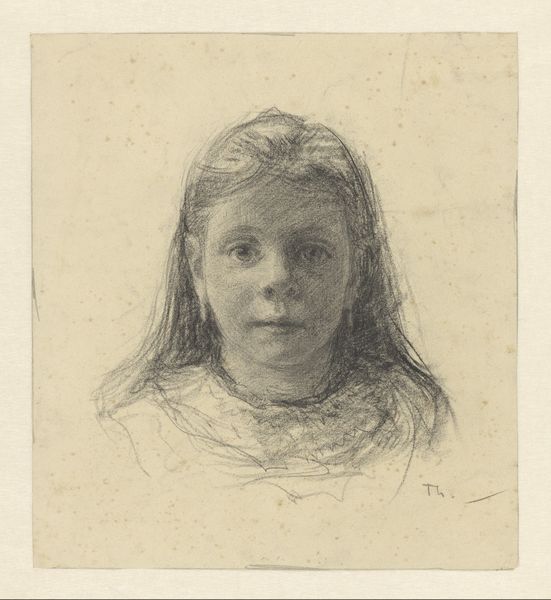
drawing, print, etching, paper
#
portrait
#
drawing
# print
#
etching
#
figuration
#
paper
Dimensions: 202 × 152 mm (image/plate); 278 × 231 mm (sheet)
Copyright: Public Domain
Curator: Welcome. Let’s consider this intriguing print, "Caro," an etching produced around 1890 by Julian Alden Weir. It now resides here at The Art Institute of Chicago. Editor: My initial impression is one of gentle melancholy. The monochromatic palette contributes to a sense of introspection. I’m struck by how Weir has manipulated the etching technique, employing a tight hatch to contrast the light. Curator: The subject, ostensibly a young girl with her pet, engages broader cultural narratives around childhood and domesticity at the close of the 19th century. Weir's academic training inflects his representational strategies here, drawing on an appreciation for realism, despite its somewhat softer Impressionistic execution. Editor: Structurally, notice how the face functions as the focal point. It commands our gaze through strong contrasts and intricate linear work, almost pushing aside any need to consider the wider representational scope. This emphasis, I suggest, isolates the work from narrative associations. Curator: True. However, the very act of memorializing childhood through art speaks volumes. Portraits of children, during this period, moved past symbolic representations toward individualized depictions reflecting evolving attitudes on youth and class. Editor: The positioning is a key factor here. Note the geometry. Weir’s implementation of form and spatial organization suggests that her image should be regarded in itself, instead of asking what she might be “about”. She simply IS. Curator: Your insights bring me to think about how American art absorbed international influences, yet maintained its unique flavor. Figures like Weir mediated that global exchange through subject matter like this. Editor: But the genius in the design lies exactly in Weir’s abstraction of specificities. Through composition and the almost monochromatic rendering, “Caro” achieves universality that makes direct biographical interpretation impossible, or irrelevant at best. Curator: I concur to some extent. By analyzing this further within its sociohistorical contexts—namely gendered representation of children during the rise of consumer culture—enriches our perspective toward Weir's intent as both documentarian and creator. Editor: A valid conclusion! Understanding "Caro" is contingent on recognizing the artist's technical manipulation, as it underscores inherent visual characteristics and challenges narrative fixation.
Comments
No comments
Be the first to comment and join the conversation on the ultimate creative platform.
